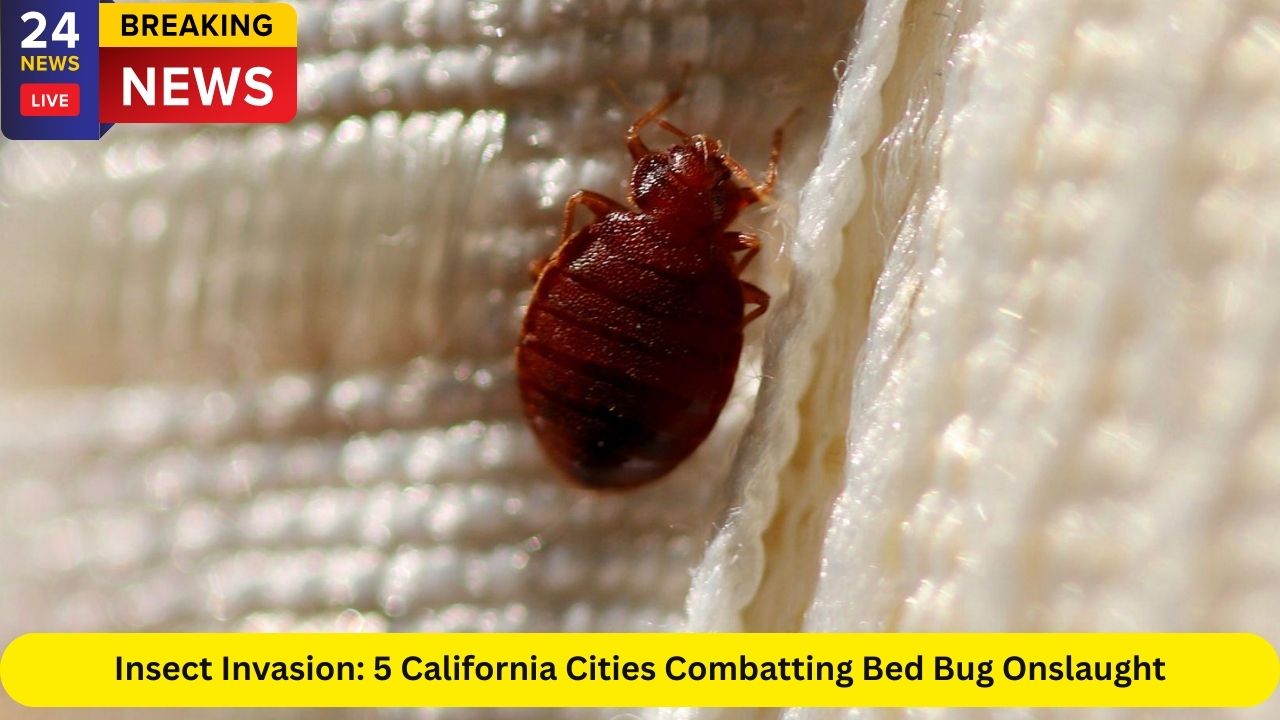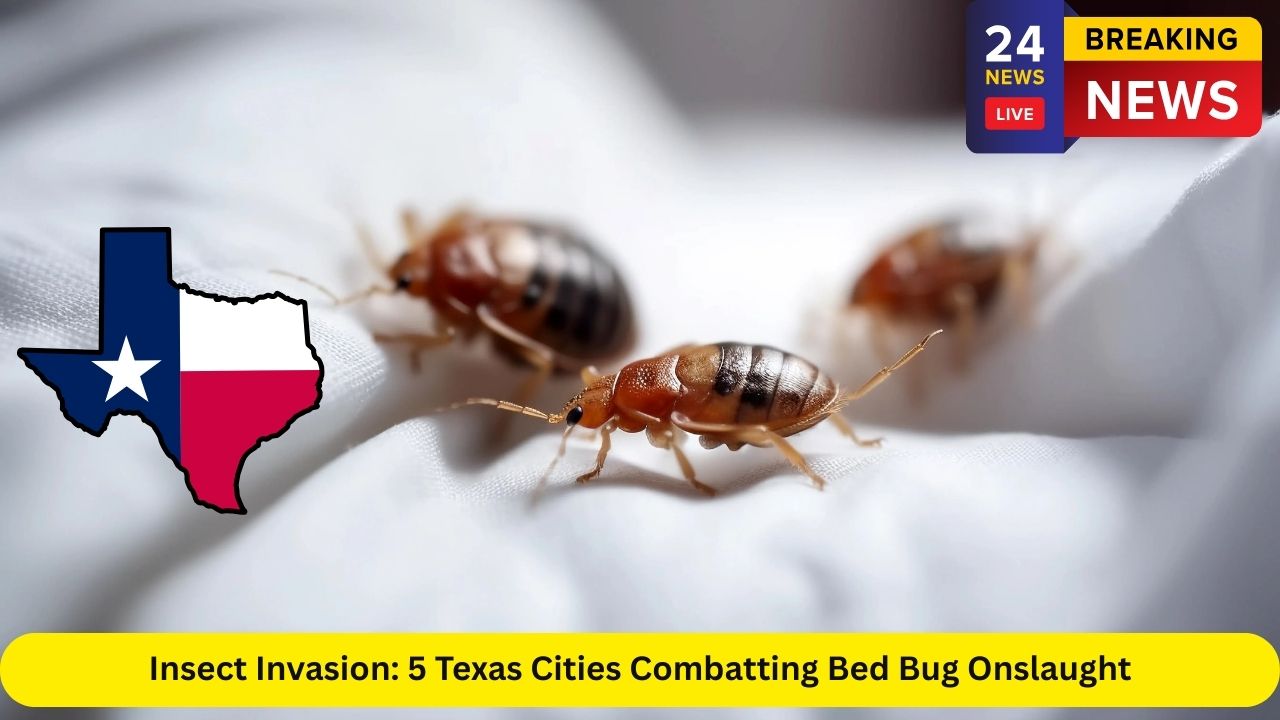Once thought to be a problem of the past, bed bugs have staged a major comeback in California. As population density rises and urban living intensifies, so too does the threat of these tiny but formidable pests. From upscale apartments in San Francisco to low-income housing in Fresno, no region is immune to their bite.
According to recent pest control company surveys, California ranks consistently among the top states for bed bug infestations. In particular, several cities have been identified as persistent hotspots, each grappling with the problem in their own unique way. This blog explores how five California cities are actively combatting the growing bed bug onslaught, what residents are facing, and what solutions may be on the horizon.
Why Bed Bugs Are a Growing Threat
Bed bugs are small, flat, reddish-brown insects that survive by feeding on human blood, usually during sleep. They’re experts at hiding in tiny crevices — from mattresses and box springs to baseboards and behind wallpaper.
But why the resurgence?
Resistance to pesticides: Many modern bed bugs have developed a strong resistance to chemicals once effective against them.
Travel and tourism: California is a top travel destination. Tourists unknowingly carry bugs between hotels, rental homes, and transit systems.
High population density: Urban housing units create easy pathways for infestations to spread between apartments.
Lack of public awareness: Many residents don’t realize they have a problem until the infestation becomes severe.
The result? Cities are being forced to rethink their pest control strategies, enforce stricter landlord policies, and increase public awareness campaigns.
City Spotlight: Los Angeles – The Urban Epicenter
As California’s largest city and the second-most populous in the U.S., Los Angeles is ground zero for bed bug problems. With over 3.8 million residents, sprawling housing units, and a booming tourism industry, LA presents ideal conditions for infestations.
Problem Areas:
Downtown LA apartment complexes report regular infestations due to transient populations.
Hollywood and Koreatown have seen a rise in bed bug complaints in budget motels and shared housing units.
Public transport lines have also been linked to the spread.
City Response:
The Los Angeles Housing Department has issued stronger enforcement against landlords who fail to act on tenant complaints.
Education campaigns are being conducted through local clinics and housing assistance groups.
Nonprofit organizations are stepping in to help low-income families afford extermination services.
City Spotlight: San Francisco – Tech Meets Infestation
Despite its reputation as a city of innovation and wealth, San Francisco has struggled quietly with its own bed bug epidemic. The city’s mix of tech millionaires and a vulnerable homeless population makes for a unique breeding ground.
Where It’s Happening:
SROs (Single Room Occupancy hotels) in the Tenderloin District have long suffered from infestations.
Upscale apartments in SoMa (South of Market) have also reported outbreaks, often due to secondhand furniture or international travel.
The city’s shelter system has become overwhelmed with reports of bugs in mattresses and sleeping areas.
City Response:
San Francisco implemented mandatory pest inspection regulations for large apartment complexes.
The Department of Public Health collaborates with shelter coordinators to offer routine inspections and quick treatment programs.
Tech companies are also investing in employee education, especially for those who frequently travel.
City Spotlight: Sacramento – Capital Under Siege
California’s capital city is not immune. Sacramento has seen a 40% rise in reported bed bug cases over the past 3 years, especially in multifamily housing.
Infestation Hotspots:
Apartment complexes in North Sacramento have seen repeated infestations, with some residents claiming reoccurrences even after treatment.
The college student population near Sacramento State University contributes to high mobility, spreading bugs through dorms and rentals.
Budget motels near the Arden-Arcade area are frequent complaint sources.
City Response:
The Sacramento Housing and Redevelopment Agency (SHRA) now requires immediate bed bug reporting from landlords.
Code enforcement officers are being trained in identifying signs of infestations.
Local pest control businesses are offering subsidized inspection programs for low-income households.
City Spotlight: Fresno – Central Valley’s Bug Battle
In the heart of the Central Valley, Fresno faces a unique challenge. With high poverty rates and older housing infrastructure, the city struggles with both infestation control and public awareness.
Challenges in Fresno:
Low-income apartment buildings, especially in southwest Fresno, suffer from infestations that spread floor-to-floor.
Migrant farmworker communities live in temporary housing with minimal pest control oversight.
Language barriers and fear of eviction prevent residents from reporting problems.
Steps Taken:
Fresno’s Code Enforcement Division has partnered with legal aid groups to ensure tenants know their rights.
Citywide workshops are being held in Spanish and Hmong to help educate families on prevention and reporting.
Pilot programs are testing heat-treatment methods as a more effective alternative to pesticides.
City Spotlight: San Diego – Southern California’s Hidden Struggle
Often overshadowed by the sunshine and surf, San Diego’s bed bug problem is growing behind closed doors. It remains one of the top ten cities in the U.S. for reported bed bug cases.
Problem Zones:
Areas around City Heights and El Cajon report frequent complaints.
The college areas of La Jolla and Pacific Beach, populated by students and tourists, see a seasonal spike.
Even military housing near Camp Pendleton has faced occasional infestations due to personnel rotation.
Response Efforts:
The San Diego County Vector Control Program now includes bed bugs in its pest education material.
Landlords are legally required to disclose prior infestations before new tenants move in.
Extermination companies are seeing demand for bed bug-sniffing dogs and green treatment options rise in the area.
How Bed Bug Infestations Impact Health and Housing
Bed bugs do not transmit disease, but their psychological and physical toll is undeniable.
Health Impacts:
Itchy, painful bites can lead to secondary infections.
Victims may experience anxiety, insomnia, and even depression due to the constant stress.
Children and seniors are particularly vulnerable to allergic reactions.
Housing Impacts:
Infestations reduce property value and can damage landlord reputations.
Renters often find it difficult to break leases, even when infestations persist.
Tenants may be forced to discard furniture, costing hundreds or even thousands of dollars.
State and Local Responses to the Bed Bug Problem
Across California, lawmakers and public agencies are stepping up. Several efforts are underway:
Stronger tenant protections: Cities like San Francisco and LA now mandate quicker landlord response times.
Funding for pest control: Some counties offer vouchers or subsidies for bed bug extermination in low-income housing.
Statewide education: The California Department of Public Health launched informational guides on bed bug identification and reporting.
School awareness programs: Children are being educated in public schools on how to spot and prevent bed bugs at home.
Prevention Tips for Californians
With the problem spreading, prevention is more important than ever. Here are actionable tips for residents:
Inspect secondhand furniture carefully before bringing it into your home.
Use protective covers on mattresses and box springs.
When traveling, inspect hotel beds and keep luggage elevated and zipped.
Wash and dry clothes on high heat after returning from a trip.
Seal cracks and crevices around baseboards and furniture.
Report infestations to landlords immediately and insist on professional treatment.
Final Thoughts: Battling the Bed Bug Boom
California’s bed bug invasion is not just a nuisance—it’s a public health and housing crisis. From the glitz of Los Angeles to the growing neighborhoods of Sacramento and Fresno, the threat is real and expanding.
But as cities invest in education, policy changes, and modern extermination techniques, there’s hope for controlling this stubborn pest. The most effective solutions will require collaboration between tenants, landlords, city officials, and health departments.
Until then, Californians must stay vigilant, informed, and proactive. Because when it comes to bed bugs, it’s not just who you are — it’s where they decide to hide.













Leave a Reply